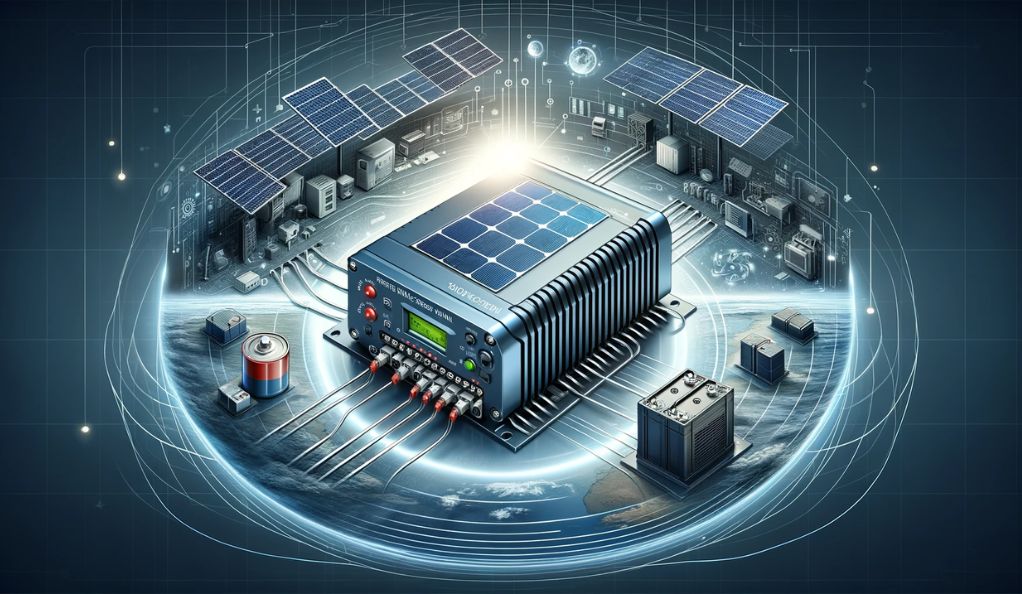Introduction to MPPT Charge Controllers
The world of solar energy is evolving rapidly, and at the forefront of this evolution are Maximum Power Point Tracking (MPPT) charge controllers. These devices play a pivotal role in optimizing the efficiency of solar panels and ensuring that solar power systems deliver maximum performance. Understanding the function and importance of MPPT charge controllers is key to appreciating the advancements in renewable energy technology.
The Essence of MPPT in Solar Systems
MPPT stands for Maximum Power Point Tracking, a technology used to maximize the power output of solar panels. Solar panels generate electricity by converting sunlight into electrical energy, but the amount of power they produce can vary greatly depending on several factors like sunlight intensity, temperature, and the angle of sunlight. This is where MPPT charge controllers come into play.
How MPPT Works
An MPPT charge controller essentially acts as a dynamic electrical converter, adjusting its input to extract the maximum possible power from the solar panel. It continuously tracks the panel’s maximum power point, which is the point at which the panel delivers its peak voltage and current, hence maximizing the power output.
The Significance of MPPT
The significance of MPPT technology in solar systems cannot be overstated. By maximizing the power extraction from solar panels, MPPT charge controllers can significantly increase the efficiency of solar power systems. This efficiency is especially crucial in areas with limited sunlight or during times when sunlight is not at its peak, like during cloudy days or in the early morning and late afternoon.
Addressing Variability and Maximizing Efficiency
Solar panels do not produce a constant level of power. Their output can fluctuate based on environmental conditions. MPPT charge controllers continuously adjust the voltage and current from the solar panels to match the battery’s charging state, ensuring optimal power transfer. This dynamic adjustment is key to harnessing the full potential of solar energy.
What Is an MPPT Solar Charge Controller & How Does It Work?

At the core of a solar power system lies the MPPT solar charge controller, a sophisticated device engineered to optimize the interaction between solar panels and the battery bank. The primary function of an MPPT controller is twofold: to maximize the power output from the solar array and to ensure safe and efficient battery charging.
Maximizing Solar Panel Efficiency
The first crucial task of an MPPT charge controller is to find and maintain the solar panel at its Maximum Power Point (MPP). The MPP is a specific point on the panel’s power curve, where the product of voltage and current (V x I) yields the highest possible power output. This point varies with changes in sunlight intensity and temperature. The MPPT controller continuously tracks these changes and adjusts the electrical load to ensure the panel operates at this optimal point.
Adapting to Battery Needs
The second key role of the MPPT controller is adapting the higher voltage output from solar panels to the lower voltage needed to charge the batteries. This adaptation is crucial because solar panels typically produce a higher voltage than what batteries can safely handle. The MPPT controller steps down the voltage to an appropriate level for the battery while ensuring the current is maximized, thus maintaining the overall power transfer at an optimal level.
Comparative Analysis: MPPT vs. PWM Charge Controllers
Understanding the difference between MPPT and PWM (Pulse Width Modulation) charge controllers is vital in choosing the right technology for a solar system.
Key Differences
- Voltage and Current Modulation: MPPT controllers can modulate both voltage and current, optimizing the power output from solar panels. In contrast, PWM controllers only modulate the current, limiting their ability to maximize overall wattage.
- Efficiency: MPPT controllers are more efficient in converting solar energy into usable power, especially in varying weather conditions.
- Cost and Complexity: MPPT controllers are generally more expensive and complex than PWM controllers but offer significantly higher efficiency and flexibility in solar system design.
The Technical Mechanics Behind MPPT Charge Controllers
MPPT controllers employ sophisticated algorithms to constantly monitor and adjust the voltage and current output from solar panels to find the MPP. This process involves:
- Scanning the Voltage-Current (V-I) Curve: The controller scans the V-I curve of the solar panel to find the point where the product of voltage and current is at its maximum.
- Power Transformation: The controller then transforms the higher voltage from the solar panels to a lower voltage suitable for charging the battery, ensuring that the power (P = V x I) remains maximized.
MPPT Controllers and Battery Compatibility
MPPT charge controllers are designed to be compatible with various battery types and voltages, such as 12V, 24V, or 48V systems. They are intelligent enough to recognize the battery voltage and can adjust their output accordingly to ensure safe and efficient charging.
Environmental Impact on MPPT Efficiency
The efficiency of MPPT controllers is influenced by environmental factors:
- Temperature: Higher temperatures can reduce the voltage output of solar panels, necessitating adjustments by the MPPT controller.
- Sunlight Intensity: Changes in sunlight intensity throughout the day affect the MPP, with the controller continuously adjusting to these variations.
Advantages of MPPT Charge Controllers in Solar Systems
- Increased Efficiency: By maximizing power output, MPPT controllers ensure that solar systems operate at peak efficiency.
- Weather Adaptability: They adapt to changing environmental conditions, maintaining optimal power generation.
- Reduced Solar Array Size: With higher efficiency, fewer solar panels might be needed to meet energy requirements.
Conclusion
MPPT technology is a cornerstone in the advancement of solar energy systems. Its ability to maximize power extraction and adapt to varying environmental conditions makes it an invaluable component in the pursuit of efficient and sustainable energy solutions. As the demand for renewable energy grows, MPPT technology will continue to play a crucial role in enhancing the performance and viability of solar power systems.
